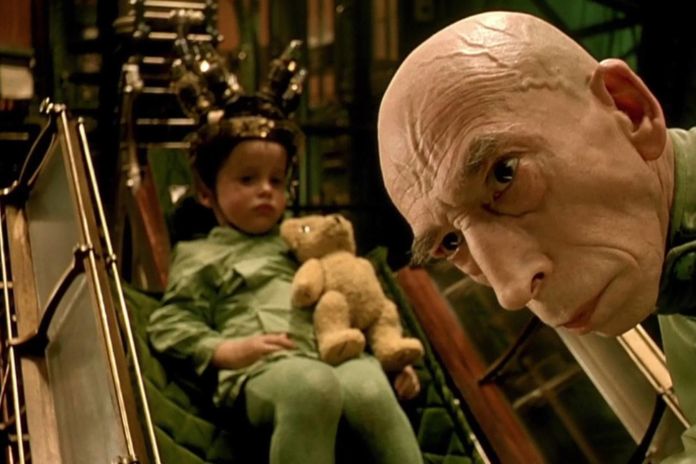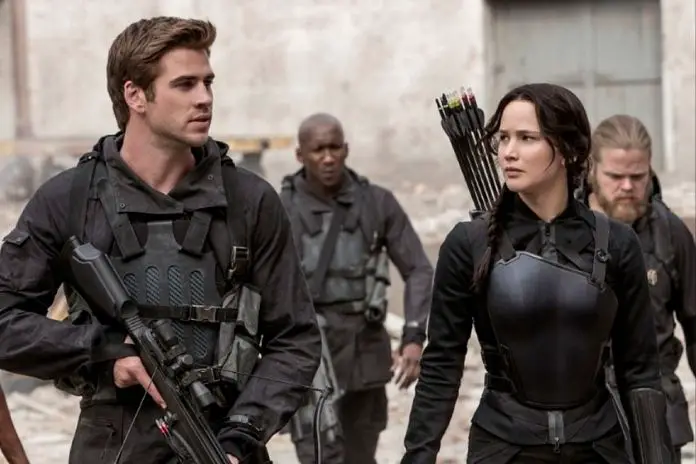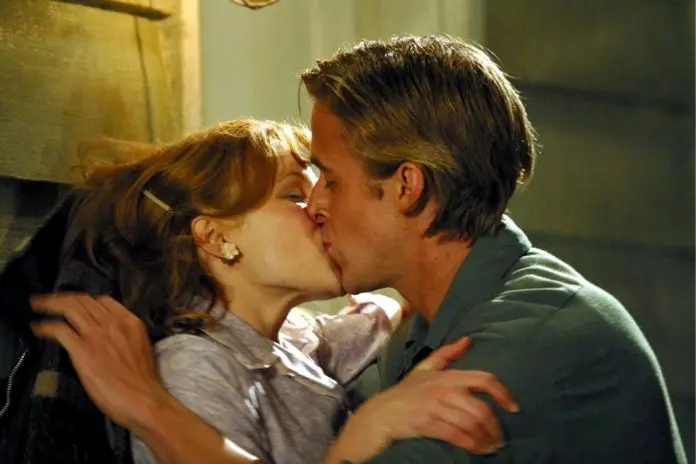“Pan’s Labyrinth” is a critically acclaimed Spanish-language film directed by Guillermo del Toro. Set in post-Civil War Spain, the film tells the story of a young girl named Ofelia who discovers a mystical labyrinth and encounters a faun named Pan. As she embarks on a series of tasks, Ofelia is drawn into a dangerous and fantastical world of magic and monsters.
One of the primary themes of “Pan’s Labyrinth” is the power of storytelling and imagination. The film explores how stories and myths can provide an escape from the harsh realities of life, as well as the dangers of becoming too consumed by one’s own fantasies.
Another central theme is the nature of power and its abuses. The film portrays the fascist regime of Francoist Spain, and how its authoritarian rule manifests in violence, oppression, and cruelty towards its citizens. It highlights the role of individuals in challenging and resisting oppressive power structures.
The film’s unique blend of dark fantasy and historical drama, along with its masterful storytelling and stunning visuals, has earned it a devoted following. People are drawn to the film’s complex themes, rich symbolism, and vivid imagery, which create a sense of wonder, awe, and unease all at once.
“Pan’s Labyrinth” has received numerous awards and nominations, including three Academy Awards, and is considered one of the greatest films of the 21st century. It is a testament to the power of cinema to transport audiences to other worlds, challenge their perspectives, and inspire empathy and reflection.
Some other interesting facts about “Pan’s Labyrinth” include the fact that the film’s creatures were created using a combination of practical effects and CGI, and that the film was shot on location in Spain, including the historic La Cueva de Arbedales cave system. Additionally, the film’s original Spanish title, “El Laberinto del Fauno,” translates to “The Labyrinth of the Faun.”
If you enjoyed “Pan’s Labyrinth” and are looking for similar movies, here are 9 suggestions:
“The Devil’s Backbone” (2001) – also directed by Guillermo del Toro, this film is set during the Spanish Civil War and follows a group of orphans who encounter supernatural forces in their new home.
“The Shape of Water” (2017) – also directed by Guillermo del Toro, this film is a romantic fantasy set in the 1960s, following a mute woman who falls in love with a mysterious amphibious creature.
“City of Lost Children” (1995) – a French film directed by Marc Caro and Jean-Pierre Jeunet, this movie is a dark and surreal fantasy about a mad scientist who kidnaps children in order to steal their dreams.
“MirrorMask” (2005) – a British film directed by Dave McKean, this movie is a coming-of-age fantasy about a teenage girl who gets sucked into a surreal and dreamlike world.
“Crimson Peak” (2015) – directed by Guillermo del Toro, this film is a Gothic romance set in the late 19th century, following a young author who marries a mysterious nobleman and moves into his crumbling, haunted estate.
“The Cell” (2000) – directed by Tarsem Singh, this psychological horror film follows a therapist who uses virtual reality technology to enter the mind of a comatose serial killer in order to save his latest victim.
“A Monster Calls” (2016) – directed by J.A. Bayona, this movie is a dark fantasy about a young boy who copes with his mother’s terminal illness by retreating into a world of imagination and storytelling.
“Labyrinth” (1986) – directed by Jim Henson, this classic fantasy film stars David Bowie and follows a teenage girl who gets sucked into a magical maze in order to rescue her baby brother.
“Tideland” (2005) – directed by Terry Gilliam, this movie is a surreal and haunting coming-of-age story about a young girl who retreats into her own fantasy world after the death of her parents.
Contents
1. “The Devil’s Backbone” (2001)
“The Devil’s Backbone” is a dark, atmospheric film directed by Guillermo del Toro, and is often considered a companion piece to “Pan’s Labyrinth”. Set during the Spanish Civil War, the movie follows young Carlos (Fernando Tielve) as he is left at an isolated orphanage. Carlos soon discovers the ghost of a former student who died mysteriously, and learns about the complex web of relationships and secrets that connect the inhabitants of the orphanage. As the war rages outside, tensions and violence escalate within the orphanage, leading to a haunting and unforgettable climax.
Similar to “Pan’s Labyrinth”, “The Devil’s Backbone” explores the themes of fantasy and escapism as a means of coping with trauma and violence. The film also draws parallels between the supernatural and the horrors of war, as well as examining the way individuals respond to crises of power and violence.
2. “The Shape of Water” (2017)
Directed by Guillermo del Toro, “The Shape of Water” is a romantic fantasy set in the early 1960s during the Cold War. The film follows a mute woman named Elisa (Sally Hawkins) who works as a janitor at a government laboratory. Elisa becomes fascinated with a mysterious amphibious creature (Doug Jones) that is being held in the lab, and develops a deep emotional connection with it. As she forms a plan to help the creature escape, Elisa must navigate dangerous political forces, as well as the prejudice and discrimination that she faces as a woman with a disability.
Like “Pan’s Labyrinth”, “The Shape of Water” explores the relationship between the fantastical and the real, as well as the power of empathy and human connection in the face of oppression and violence. The film also features del Toro’s trademark stunning visuals and attention to detail, as well as strong performances by the cast.
3. “City of Lost Children” (1995)
“City of Lost Children” is a surreal and visually stunning film directed by Marc Caro and Jean-Pierre Jeunet. The movie takes place in a dystopian, industrial world where a mad scientist named Krank (Daniel Emilfork) kidnaps children in order to steal their dreams. When a young girl named Miette (Judith Vittet) becomes involved in a plot to save a kidnapped child, she must navigate a twisted and nightmarish world filled with grotesque characters and bizarre landscapes.
Similar to “Pan’s Labyrinth”, “City of Lost Children” uses dark fantasy and surreal imagery to explore themes of childhood, innocence, and the power of storytelling. The film also features a compelling and diverse cast of characters, as well as stunning visuals that create a sense of wonder and unease. Overall, “City of Lost Children” is a captivating and unique cinematic experience that stays with viewers long after the credits roll.
4. “MirrorMask” (2005)
“MirrorMask” is a visually stunning film directed by Dave McKean, with a screenplay by Neil Gaiman. The movie follows a young girl named Helena (Stephanie Leonidas) who dreams of running away from her family’s circus and becoming an artist. When her mother falls ill, Helena is transported to a magical world where she must navigate a dangerous and surreal landscape in order to find the MirrorMask, an object that can save her mother’s life. Along the way, she meets a variety of strange and colorful characters, including a powerful Queen and a group of eccentric performers.
Similar to “Pan’s Labyrinth”, “MirrorMask” uses fantasy and surrealism to explore the themes of identity, creativity, and the power of imagination. The film features stunning visuals, from the elaborate costumes and makeup to the intricately designed sets and landscapes. Additionally, both movies share a sense of whimsy and wonder, as well as a deep appreciation for the transformative power of storytelling.
5. “Crimson Peak” (2015)
Directed by Guillermo del Toro, “Crimson Peak” is a gothic romance that tells the story of Edith Cushing (Mia Wasikowska), a young writer who falls in love with a charming and mysterious man named Thomas Sharpe (Tom Hiddleston). Edith accompanies Thomas and his sister Lucille (Jessica Chastain) to their crumbling estate, Allerdale Hall, where she soon discovers the sinister secrets of the Sharpe family and the ghosts that haunt the estate.
Like “Pan’s Labyrinth”, “Crimson Peak” uses dark fantasy and horror to explore the themes of power, desire, and the consequences of violence. Both movies feature strong, complex female protagonists who must navigate dangerous and patriarchal worlds in order to survive. Additionally, “Crimson Peak” shares with “Pan’s Labyrinth” a sense of eerie beauty, as well as a visual and thematic emphasis on decay and transformation.
6. “The Cell” (2000)
Directed by Tarsem Singh, “The Cell” is a psychological thriller that follows Catherine Deane (Jennifer Lopez), a psychologist who uses a cutting-edge technology to enter the mind of a comatose serial killer (Vincent D’Onofrio) in order to find his latest victim. As Catherine explores the dark and surreal landscape of the killer’s mind, she must confront her own trauma and fears, and race against time to save the victim before it’s too late.
Similar to “Pan’s Labyrinth”, “The Cell” uses surrealism and fantasy to explore the themes of trauma, the human psyche, and the power of imagination. Both movies feature dreamlike and disturbing visuals, as well as complex and haunted characters who must confront their deepest fears in order to survive. Additionally, “The Cell” shares with “Pan’s Labyrinth” a sense of moral ambiguity, as the line between heroism and villainy becomes increasingly blurred.
7. “A Monster Calls” (2016)
Directed by J.A. Bayona, “A Monster Calls” is a powerful and emotional story that follows a young boy named Conor (Lewis MacDougall) who is struggling to cope with his mother’s illness. Conor is visited by a giant tree monster (voiced by Liam Neeson) who tells him three stories that will help him confront his deepest fears and face the truth about his mother’s condition. The film features stunning visual effects and a touching performance by MacDougall, as well as powerful supporting performances by Felicity Jones and Sigourney Weaver.
Similar to “Pan’s Labyrinth”, “A Monster Calls” uses fantasy and surrealism to explore the themes of grief, loss, and coming-of-age. Both movies feature young protagonists who are forced to confront the dark and complex realities of the adult world, and who find solace and strength in their imagination and inner strength. Additionally, “A Monster Calls” shares with “Pan’s Labyrinth” a sense of emotional depth and resonance, as well as a willingness to embrace both the beauty and the pain of life.
8. “Labyrinth” (1986)
Directed by Jim Henson, “Labyrinth” is a beloved classic that follows a teenage girl named Sarah (Jennifer Connelly) who must navigate a magical and treacherous labyrinth in order to rescue her baby brother from the clutches of the Goblin King (David Bowie). Along the way, Sarah meets a variety of strange and colorful characters, including a wise-cracking worm and a fierce warrior named Ludo.
Like “Pan’s Labyrinth”, “Labyrinth” uses fantasy and surrealism to explore the themes of adolescence, identity, and the power of imagination. Both movies feature young protagonists who must navigate fantastical and dangerous worlds in order to find their place in the world and become who they are meant to be. Additionally, “Labyrinth” shares with “Pan’s Labyrinth” a sense of humor and whimsy, as well as a visual and thematic emphasis on transformation and the power of storytelling.
9. “Tideland” (2005)
Directed by Terry Gilliam, “Tideland” is a disturbing and surreal story that follows a young girl named Jeliza-Rose (Jodelle Ferland) who is forced to cope with her drug-addicted parents and the eerie and otherworldly landscape of her surroundings. As Jeliza-Rose creates a rich and vivid inner world to escape the horrors of her reality, she must confront the dark and twisted forces that threaten to consume her.
Similar to “Pan’s Labyrinth”, “Tideland” uses fantasy and surrealism to explore the themes of trauma, escape, and the power of the human psyche. Both movies feature young protagonists who must navigate dangerous and fantastical landscapes in order to survive and overcome their struggles. Additionally, “Tideland” shares with “Pan’s Labyrinth” a sense of dark beauty, as well as a willingness to embrace the complexities and contradictions of the human experience.
Here’s a table with the IMDb ratings and Rotten Tomatoes scores for the movies you’ve mentioned:
| Movie Title | IMDb Rating | Rotten Tomatoes Score |
| Pan’s Labyrinth | 8.2 | 95% (audience score) |
| The Devil’s Backbone | 7.4 | 92% (audience score) |
| The Shape of Water | 7.3 | 73% |
| City of Lost Children | 7.6 | 78% |
| MirrorMask | 6.9 | 73% |
| Crimson Peak | 6.5 | 71% |
| The Cell | 6.3 | 46% |
| A Monster Calls | 7.5 | 86% |
| Labyrinth | 7.4 | 72% |
| Tideland | 6.5 | 49% |
Note that the Rotten Tomatoes score for “Pan’s Labyrinth” reflects the audience score, as there is no consensus on the critic score.




